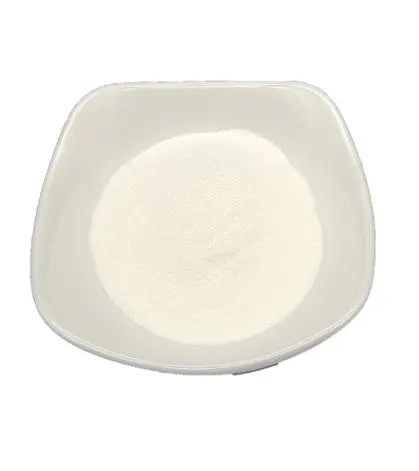Warning: Undefined array key "title" in /home/www/wwwroot/HTML/www.exportstart.com/wp-content/themes/1198/header.php on line 6
Warning: Undefined array key "file" in /home/www/wwwroot/HTML/www.exportstart.com/wp-content/themes/1198/header.php on line 7
Warning: Undefined array key "title" in /home/www/wwwroot/HTML/www.exportstart.com/wp-content/themes/1198/header.php on line 7
Warning: Undefined array key "title" in /home/www/wwwroot/HTML/www.exportstart.com/wp-content/themes/1198/header.php on line 7
- Afrikaans
- Albanian
- Amharic
- Arabic
- Armenian
- Azerbaijani
- Basque
- Belarusian
- Bengali
- Bosnian
- Bulgarian
- Catalan
- Cebuano
- China
- China (Taiwan)
- Corsican
- Croatian
- Czech
- Danish
- Dutch
- English
- Esperanto
- Estonian
- Finnish
- French
- Frisian
- Galician
- Georgian
- German
- Greek
- Gujarati
- Haitian Creole
- hausa
- hawaiian
- Hebrew
- Hindi
- Miao
- Hungarian
- Icelandic
- igbo
- Indonesian
- irish
- Italian
- Japanese
- Javanese
- Kannada
- kazakh
- Khmer
- Rwandese
- Korean
- Kurdish
- Kyrgyz
- Lao
- Latin
- Latvian
- Lithuanian
- Luxembourgish
- Macedonian
- Malgashi
- Malay
- Malayalam
- Maltese
- Maori
- Marathi
- Mongolian
- Myanmar
- Nepali
- Norwegian
- Norwegian
- Occitan
- Pashto
- Persian
- Polish
- Portuguese
- Punjabi
- Romanian
- Russian
- Samoan
- Scottish Gaelic
- Serbian
- Sesotho
- Shona
- Sindhi
- Sinhala
- Slovak
- Slovenian
- Somali
- Spanish
- Sundanese
- Swahili
- Swedish
- Tagalog
- Tajik
- Tamil
- Tatar
- Telugu
- Thai
- Turkish
- Turkmen
- Ukrainian
- Urdu
- Uighur
- Uzbek
- Vietnamese
- Welsh
- Bantu
- Yiddish
- Yoruba
- Zulu
Aug . 21, 2024 20:37 Back to list
Chromic Sulfuric Acid Solution for Effective Cleaning Applications
Chromic Sulfuric Acid Cleaning Solution A Comprehensive Overview
Chromic sulfuric acid cleaning solution is a potent and efficient cleaning agent commonly used in various industrial applications. It plays a crucial role in cleaning and preparing surfaces, particularly in the fields of metalworking, manufacturing, and laboratory usage. This article will explore the properties, applications, safety measures, and environmental considerations associated with chromic sulfuric acid cleaning solutions.
Properties of Chromic Sulfuric Acid
Chromic sulfuric acid is a mixture of sulfuric acid (H₂SO₄) and chromium trioxide (CrO₃). The resulting solution exhibits strong oxidizing properties, making it an effective cleaner for a variety of materials, especially metals. The acidity of sulfuric acid helps to break down contaminants, while the chromium compounds contribute to the removal of organic residues and oxides.
One of the notable features of chromic sulfuric acid is its ability to clean complex geometries and intricate components. The solution's penetrative capabilities allow it to reach inaccessible areas and eliminate contaminants that may be missed by mechanical cleaning methods. This ensures a high level of cleanliness critical in applications such as aerospace and automotive industries, where surface preparation is vital for subsequent processes like plating, bonding, and coating.
Applications
The chromic sulfuric acid cleaning solution is widely used in various industries. In aerospace manufacturing, it is employed to clean aircraft components due to its ability to remove aluminum oxides and other contaminants without damaging the underlying metal. Similarly, in the automotive sector, it assists in preparing parts for further treatments such as electroplating or painting, which require clean surfaces to ensure proper adhesion.
Laboratories frequently utilize chromic sulfuric acid for cleaning glassware and other equipment. The solution effectively removes organic residues, making it an ideal choice for ensuring the cleanliness of lab instruments and ensuring precise experimental conditions.
chromic sulfuric acid cleaning solution

Safety Measures
Despite its effectiveness, handling chromic sulfuric acid requires strict safety precautions due to its corrosive nature and potential health hazards. Operators must don appropriate personal protective equipment (PPE) such as gloves, goggles, and face shields to minimize exposure. Furthermore, it's essential to work in well-ventilated areas or under fume hoods to avoid inhalation of hazardous vapors.
In case of skin contact, immediate washing with copious amounts of water is critical, while eye exposure necessitates flushing with water and seeking medical attention. Given the toxic nature of chromium compounds, proper training and adherence to safety protocols are vital to prevent accidents and health issues.
Environmental Considerations
The use of chromic sulfuric acid requires careful consideration regarding environmental impact. Chromium is classified as a hazardous substance, and its disposal is subject to strict regulatory guidelines. Industries utilizing this cleaning solution must implement appropriate waste management practices, including neutralization and treatment of spent solutions to minimize environmental harm.
In recent years, there has been a push towards finding alternative cleaning agents that could replace chromic sulfuric acid. Developing eco-friendly solutions that do not compromise cleaning efficiency remains a priority for researchers and industry professionals alike. Innovations in this area highlight the importance of balancing effective cleaning practices with environmental stewardship.
Conclusion
Chromic sulfuric acid cleaning solution remains a vital tool in many industrial processes, known for its potent cleaning capabilities and effectiveness in surface preparation. However, its handling demands rigorous safety practices to protect workers and the environment. As industries continue to evolve, the pursuit of safer and greener alternatives will likely shape the future of cleaning solutions in a way that maintains efficacy while minimizing ecological impact.
Latest news
-
Certifications for Vegetarian and Xanthan Gum Vegetarian
NewsJun.17,2025
-
Sustainability Trends Reshaping the SLES N70 Market
NewsJun.17,2025
-
Propylene Glycol Use in Vaccines: Balancing Function and Perception
NewsJun.17,2025
-
Petroleum Jelly in Skincare: Balancing Benefits and Backlash
NewsJun.17,2025
-
Energy Price Volatility and Ripple Effect on Caprolactam Markets
NewsJun.17,2025
-
Spectroscopic Techniques for Adipic Acid Molecular Weight
NewsJun.17,2025

